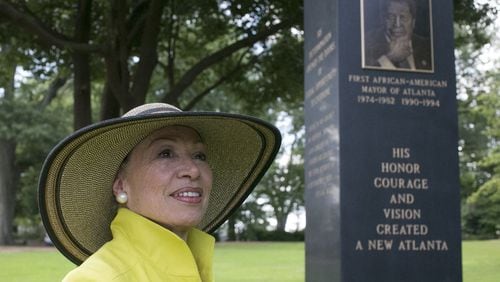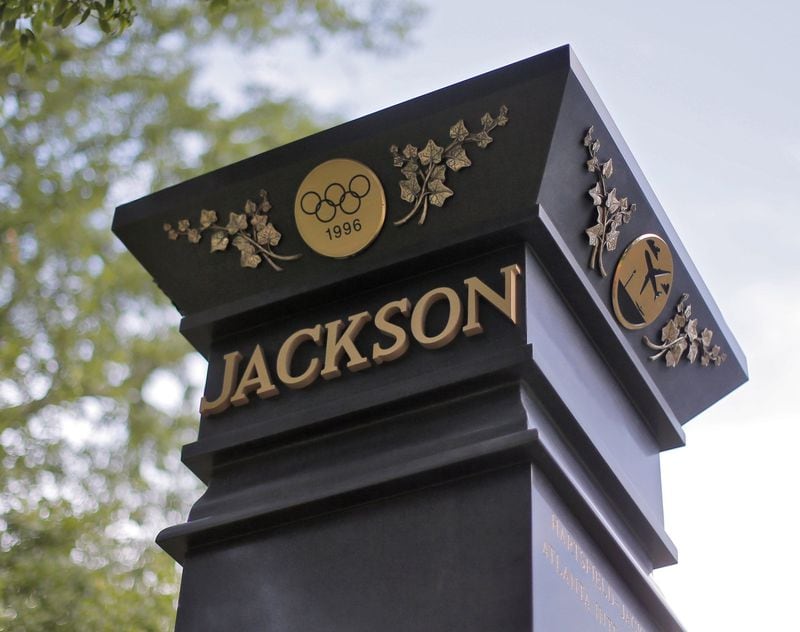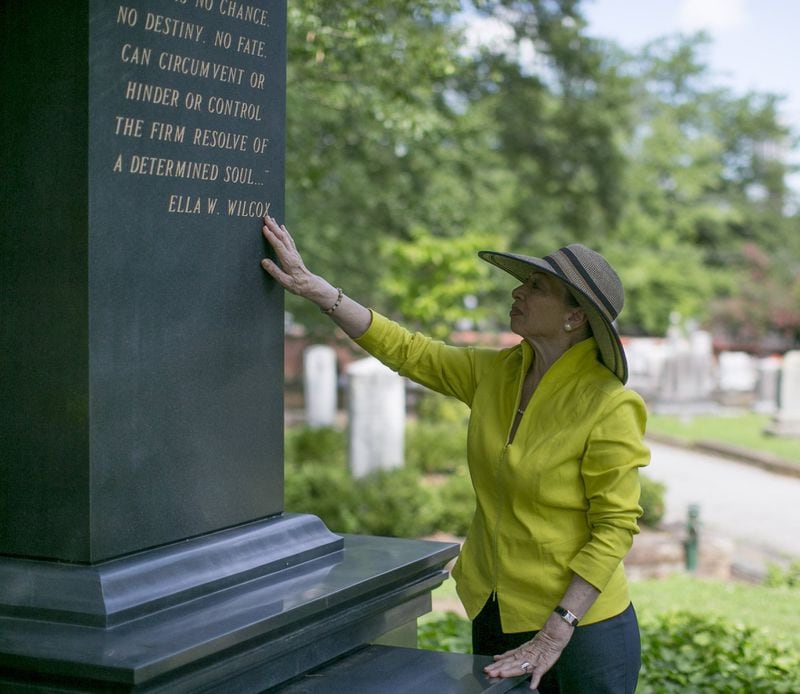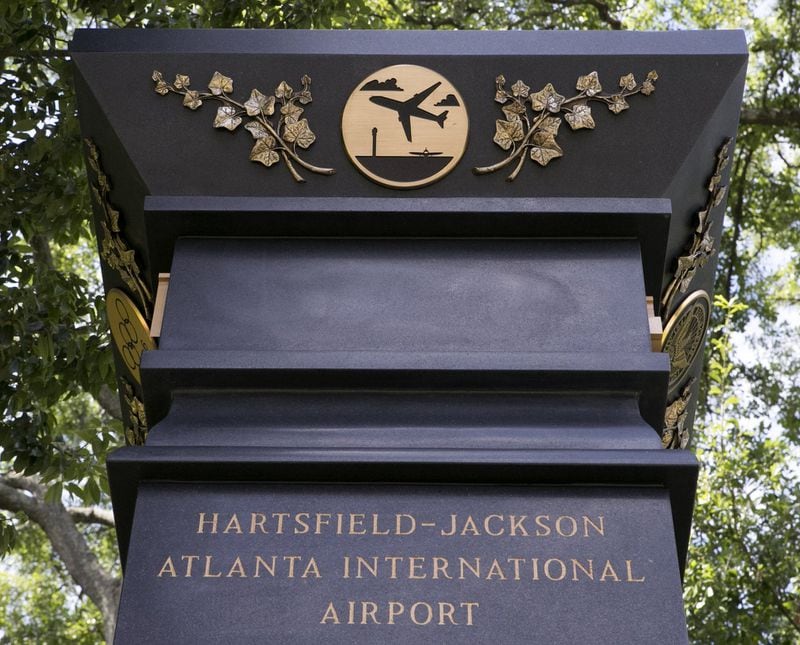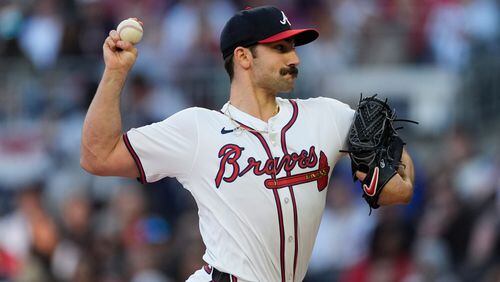Valerie Richardson Jackson avoided this moment for more than a decade.
Since Maynard Jackson died 14 years ago, his widow had always thought about erecting a monument befitting his legacy as Atlanta’s first black mayor. It would go on his gravesite at Oakland cemetery — but she could never gather the strength to actually do it.
Credit: Bob Andres
Credit: Bob Andres
Three years ago, she found that strength. Her brother helped her design the memorial and the Roberts-Shields Memorial Co. of Marietta was contracted to build the granite monument.
“When I was called and told that the stone had come in, I cried like I did when I found out he had died,” Jackson said. “I had been in denial for 10 years and when the stone came in I thought I would be rejoiceful because it was finally happening. But I knew that in a way, this monument would cement his death. So I just lost it.”
On Friday, wearing one of her trademark hats, Jackson visited the monument she created and dedicated last month. She worried about how the potted ivies looked, despite all of the recent rain. Then she glanced at the etched photograph of her husband and closed her eyes as if in prayer.
“Maynard is talking to me,” she said.
In a cemetery as large, old and beautiful as Oakland, it can be difficult to stand out. But what Jackson has created for her husband, stands out.
Credit: Bob Andres
Credit: Bob Andres
When Mayor Jackson died June 23, 2003 at 65, then-Atlanta Mayor Shirley Franklin offered the city-owned plot – located at the North Public Grounds – to the family as a gift. Resting under a 165-year-old oak, the former mayor faces west toward the downtown Atlanta skyline that he helped create. Most of the other graves, including that of Margaret Mitchell, buried about 100 feet from Jackson, face east.
Previously, a simple tombstone adorned the grounds, although a large patch of ivy spontaneously grew over the mayor’s grave site, creating a lush heart-shaped canopy.
The previous tombstone is now on the corner of the road, waiting for Valerie Jackson to decide what to do with it.
In its place is a 14.5-foot, 14-ton obelisk made of African-sourced honed black granite sitting atop a platform of gray Georgia granite. Four hand-carved bronze discs on each facet of the crown represent varying aspects of Jackson’s legacy: the city of Atlanta, the scales of justice, the Olympic rings and the Atlanta airport, which was renamed Hartsfield-Jackson after his death.
Credit: Bob Andres
Credit: Bob Andres
All of the lettering and ivy adornments are in gold.
On one side of the monument, the first line of poet Ella Wheeler Wilcox’s “Will” is engraved. On another side are the words: Activist, Statesman, Humanitarian, Entrepreneur and Beloved Son, Brother, Husband and Father.
Valerie Jackson said every word of the monument was studied, debated and challenged – mostly by her. She agonized over changing the end of one phrase from “all people,” to “everyone.”
When she couldn’t find a good depiction of the airport for the top, she made her brother, artist Monte Richardson do it. At least 74 renditions of the memorial wound up in the trash.
“Maynard always said that I was so hard to please,” she said.
Jackson would not disclose how much the monument cost, but no taxpayer or foundation money was used and she didn’t raise outside funds for it.
“I did not solicit one cent,” she said. “It was my gift to him.”
But Jackson said when she finally came up with the design of the monument and presented it to the Historic Oakland Foundation, she was concerned that it would clash with the cemetery’s Victorian aesthetic.
“I wanted to be sure that it was inclusive and represented the spirit of the park,” Jackson said. “And I was worried about the black. That is why I insisted that it be honed and not polished.”
The difference: a polished stone is shiny and glossy; the finish of a honed monument is more like a matte.
Credit: Bob Andres
Credit: Bob Andres
But the black still resonates and that is not by accident, Jackson said. While the cemetery, opened by the city of Atlanta in 1850, is closely associated with the Old South — five Confederate generals are buried there — blacks have always been buried there. The first, in 1853, was a slave identified in the records only as John.
“The first mayor of Atlanta is buried here,” Jackson said. “With Maynard being the first African-American mayor, I wanted him to stand out, and he does. Oakland is a historic landmark and he is a historic mayor. He should be here.”
Jackson is the 27th Atlanta mayor to be buried at Oakland, according to David Moore, executive director of the Historic Oakland Foundation.
The modern look of Jackson’s monument builds on the belief that Oakland, while steeped in Victorian culture, is a gradually evolving outdoor museum and park, Moore said.
“People come here and think that we are frozen in Victorian times,” Moore said. “But in reality, this is a living, breathing continuation of a historical site. People are still being buried here. And Mayor Jackson’s more modern memorial shows that we are not standing still in the 1800s. His spot stands out.”
As Jackson and Moore inspected the memorial, groups of people, families and kids stopped to look or take a photo. Jackson was pleased and said she wanted the monument to also serve as a teaching tool.
“I want them to be curious about the symbols and ask ‘why is that?’ or ‘what is that?’ and sense the strength the memorial represents,” said Jackson, adding that she wanted it at least twice as tall as her 6-foot-3 husband.
“Sure it is a little oversized and grand. But so was Maynard.”
